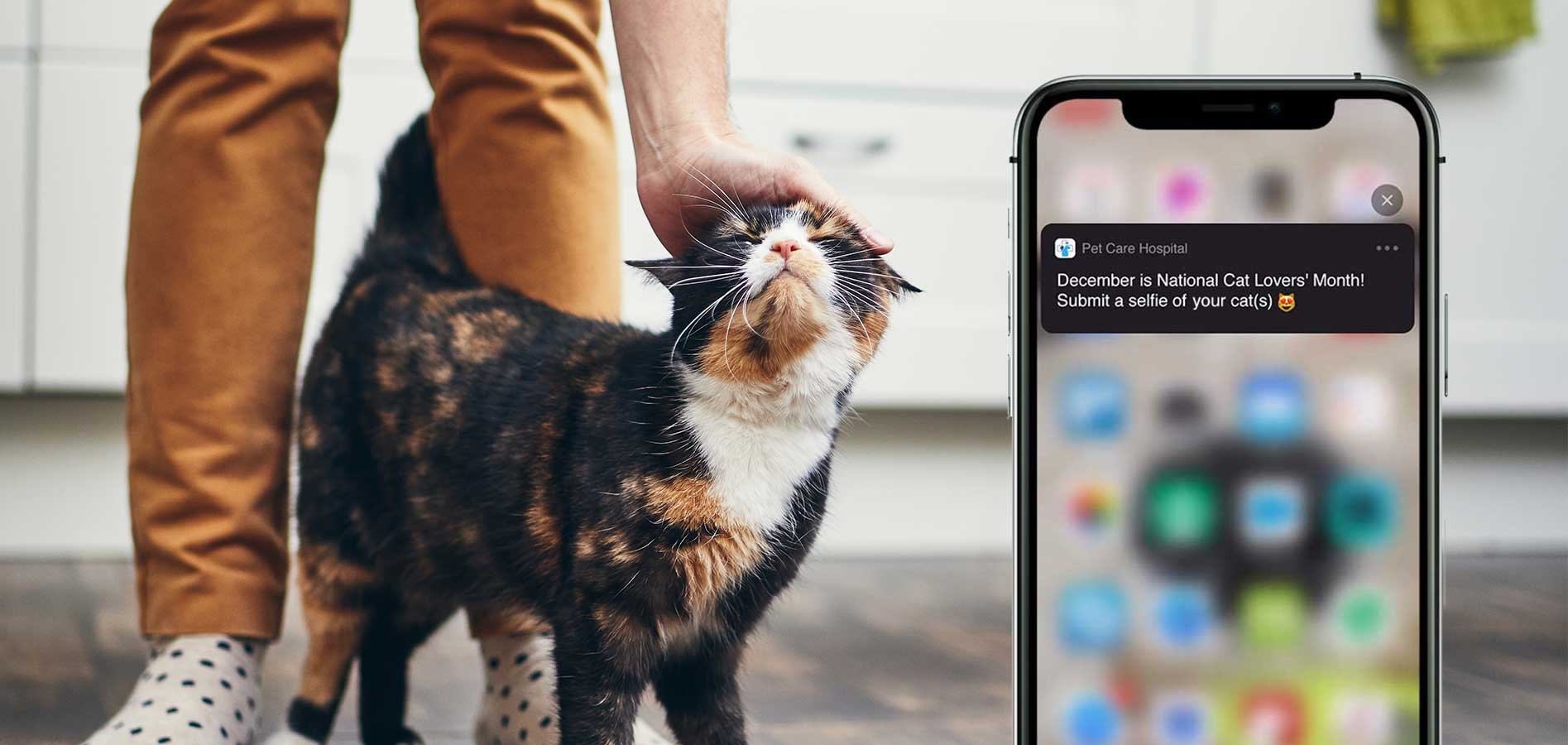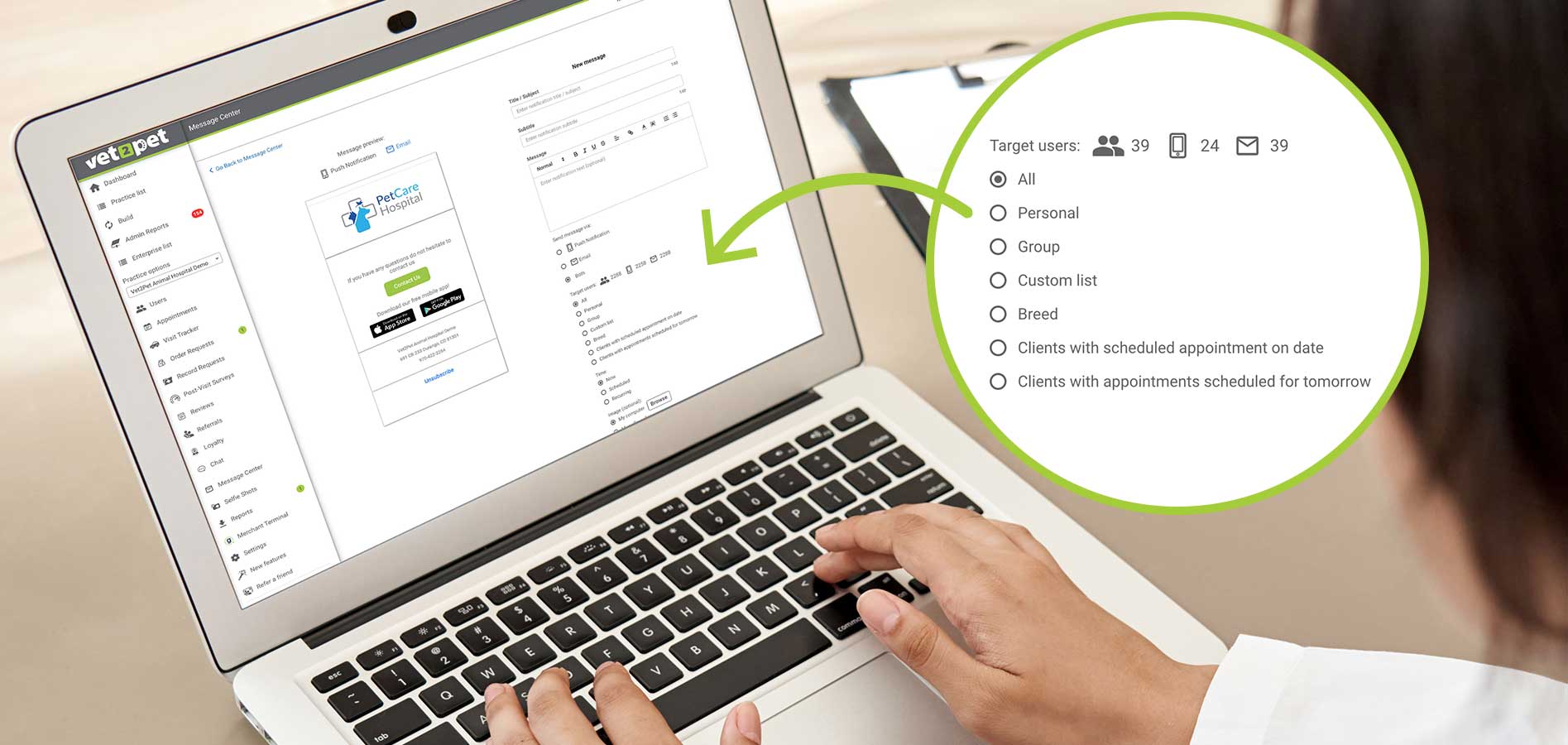Have you ever signed up to receive emails from a company you thought would have great content, only to be turned off by the irrelevant material you were sent?
As a result, you scroll to the bottom of the email and hit unsubscribe.
Why you need to target your audience correctly
This story highlights the importance of reaching your target audience appropriately, and with content designed to trigger engagement and interest. When your clients receive emails and app notifications from your veterinary practice, they should be relevant. So, if your feline-loving clients are always receiving communications on how to best care for their dog, they’re likely to unsubscribe to your practice’s communications. Once unsubscribed—and unengaged—it can be difficult to connect again with your clients for important hospital updates, pet health news, and other useful, yet non-specific, information.
The content you send to your clients should always be customized, tailored to their interests, and relevant, otherwise you are likely to lose valuable communication channels.

How to target your audience
Once you have your client signed up to receive practice communications, ensure each email, text, or app notification is valuable and relevant to them. Listed below are some ideas on how to target your audience for applicable content.
1. All users
The easiest method of communicating with your clients is to send your content to everyone on your list. While customization is important, there are certain announcements and notifications that are valuable to every client who enters your veterinary practice.
Send updates to your entire user list to notify clients of hospital announcements or operational updates, regional health alerts, and marketing and promotional content.
2. Single client
Sometimes, communicating with a single client through email, app notification, or text is so much easier than calling that person. When done properly, these communication methods can save your veterinary team a ton of time by keeping them off the phone.
Schedule recurring reminders to help a client remember to book appointments for treatments, such as Adequan injections or acupuncture sessions. You can also send test results, hospitalization updates, or surgical discharge instructions to individual clients via email, app notification, or text.
3. Species or age groups
Dividing your client list into pet owners of a specific species or age group allows you to further tailor your content. For owners of senior pets, send information about more frequent senior pet wellness visits and the importance of early-detection screening tests. New puppy and kitten owners can receive a wealth of knowledge on everything from proper pet nutrition, socialization, vaccinations, and house training. You can also send health alerts that are pertinent to only dogs or cats, such as a news article on an outbreak of canine influenza in your area.
4. Breed-specific list
Using a tool that separates out a particular breed is great for celebrating breed-specific holidays with your clients. You can also use it to let pet owners know about certain breed health issues, like the prevalence of dental disease in sighthounds, or the increased risk of calcium oxalate stone development in Persian cats.
5. Clients with scheduled appointments
If you’re using hospital check-in forms—which can make your check-in process so much more efficient—you can select clients who have scheduled appointments to receive their forms a day or two in advance. This tool is also handy to provide advance notice to clients of your arrival process and curbside protocols so they’re not calling your hospital and tying up your phone lines. In addition, sending a check-in form is a gentle reminder that says, “Hey, don’t forget Fido is scheduled for his wellness visit tomorrow!”
6. Custom list
Sometimes, it’s useful to pick and choose who you want to send content to, based on certain criteria that can be found in your veterinary practice management software. Unlike species, age, or breed lists, you can customize this list to include clients who are unique in some way. For example, you can notify clients who purchase the same product, like Vetmedin or Apoquel, of a backorder or price increase. Or, you can pull pets with the same diagnosis of a health issue (e.g., diabetes, hip dysplasia) of new therapies or treatment options that you now have available.

How to reach your audience
It’s not only about what you send your clients, it’s also about how you reach them.
A recent blind survey of 1,003 U.S. pet owners conducted by Blue Research found:
- 98% want to hear from their veterinarian via email, but only 54% have received an email from their veterinarian, and 41% have never received an email from their veterinarian.
- 75% reported that they want to receive an email from their veterinarian once per week (28%) or once per month (47%).
- 63% want to receive reminders of prescriptions, along with links to buy them, via email.
- 62% want emails containing information that could help improve their pets’ health.
The moral of the story? Your clients want you to email them. Most clients would be perfectly satisfied receiving emails, app notifications, and texts from your practice, so your team can stop making all those phone calls, and start communicating more efficiently.



